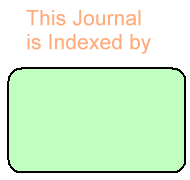Yusra Abdulqader ![]() ,
Fatemah Kamel,
Rania Magadmi,
Haythum Tayeb,
Mohammed Bazuhair
,
Fatemah Kamel,
Rania Magadmi,
Haythum Tayeb,
Mohammed Bazuhair
For correspondence:- Yusra Abdulqader Email: yabdulqader0001@stu.kau.edu.sa Tel:+966-541080510
Received: 7 February 2025 Accepted: 10 April 2025 Published: 07 May 2025
Citation: Abdulqader Y, Kamel F, Magadmi R, Tayeb H, Bazuhair M. Genetic association of SCN1A gene polymorphisms and efficacy of anti-seizure medications. Trop J Pharm Res 2025; 24(4):539-559 doi: https://dx.doi.org/10.4314/tjpr.v24i4.11
© 2025 The authors.
This is an Open Access article that uses a funding model which does not charge readers or their institutions for access and distributed under the terms of the Creative Commons Attribution License (http://creativecommons.org/licenses/by/4.0) and the Budapest Open Access Initiative (http://www.budapestopenaccessinitiative.org/read), which permit unrestricted use, distribution, and reproduction in any medium, provided the original work is properly credited..
Anti-seizure medications (ASMs) are crucial in the management of seizures; however, significant variability in treatment responses exists, even among patients with similar seizure types and clinical histories. Developing an objective biomarker that could consistently predict efficacy of ASMs poses a substantial challenge in transforming the landscape of epilepsy treatment. Currently, healthcare providers tend to rely on trial-and-error methods when selecting ASMs, which constitutes a time-consuming process and may delay the use of alternative non-pharmacological interventions, such as ketogenic diets, epilepsy surgery and neuromodulating therapies. Predicting the efficacy of ASMs through pharmacogenetic studies that explore the relationship between ASMs and genetic variations related to their mechanisms of action offers prognostic insights into treatment responses, potentially leading to improved outcomes. While sodium channel subunit (SCN) genes, along with various ion channels and receptors, have been extensively investigated as therapeutic targets, findings have been inconsistent. This is likely due in part to differences such as variations in defining drug responses, types of ASM combinations used, and the genetic variants tested. Nevertheless, these studies highlight the significant influence of genetic variations on the activity of ASMs and subsequently on predictions for expectable therapeutic responses. Advances in sequencing technologies have resulted in extensive genetic datasets that could enhance the accuracy of ASMs' response predictions. This review examines the pharmacogenetic associations of sodium channel 1A subunit (SCN1A) gene polymorphisms and the efficacy of ASMs in different ethnicities
Archives


News Updates